A New Strategy for the High-Throughput Characterization of Materials’ Mechanical Homogeneity Based on the Effect of Isostatic Pressing on Surface Microstrain
Abstract
1. Introduction
2. Experimental Procedure
3. Results and Discussion
4. Conclusions
Author Contributions
Funding
Institutional Review Board Statement
Informed Consent Statement
Data Availability Statement
Conflicts of Interest
References
- Pineau, A.; Benzerga, A.A.; Pardoen, T. Failure of metals I: Brittle and ductile fracture. Acta Mater. 2016, 107, 424–483. [Google Scholar] [CrossRef]
- Pineau, A.; McDowell, D.L.; Busso, E.P.; Antolovich, S.D. Failure of metals II: Fatigue. Acta Mater. 2016, 107, 484–507. [Google Scholar] [CrossRef]
- Zerbst, U.; Madia, M.; Klinger, C.; Bettge, D.; Murakami, Y. Defects as a root cause of fatigue failure of metallic components. II: Non-metallic inclusions. Eng. Fail. Anal. 2019, 98, 228–239. [Google Scholar] [CrossRef]
- Bandyopadhyay, R.; Sangid, M.D. Crystal plasticity assessment of inclusion- and matrix driven competing failure modes in a nickel-base superalloy. Acta Mater. 2019, 177, 20–34. [Google Scholar] [CrossRef]
- Naragani, D.; Sangid, M.D.; Shade, P.A.; Schuren, J.C.; Sharma, H.; Park, J.-S.; Kenesei, P.; Bernier, J.V.; Turner, T.J.; Parr, I. Investigation of fatigue crack initiation from a non-metallic inclusion via high energy x-ray diffraction microscopy. Acta Mater. 2017, 137, 71–84. [Google Scholar] [CrossRef]
- Hamade, R.; Baydoun, A. Nondestructive detection of defects in friction stir welded lap joints using computed tomography. Mater. Des. 2019, 162, 10–23. [Google Scholar] [CrossRef]
- Tseng, L.; Ma, J.; Wang, S.; Karaman, I.; Kaya, M.; Luo, Z.; Chumlyakov, Y. Superelastic response of a single crystalline FeMnAlNi shape memory alloy under tension and compression. Acta Mater. 2015, 89, 374–383. [Google Scholar] [CrossRef]
- Straumal, B.B.; Kilmametov, A.R.; Baretzky, B.; Kogtenkova, O.A.; Straumal, P.B.; Lityńska-Dobrzyńska, L.; Chulist, R.; Korneva, A.; Zięba, P. High pressure torsion of Cu-Ag and Cu-Sn alloys: Limits for solubility and dissolution. Acta Mater. 2020, 195, 184–198. [Google Scholar] [CrossRef]
- Cho, J.-H.; Kim, H.-W.; Kang, S.-B.; Han, T.-S. Bending behavior, and evolution of texture and microstructure during differential speed warm rolling of AZ31B magnesium alloys. Acta Mater. 2011, 59, 5638–5651. [Google Scholar] [CrossRef]
- Heckman, N.M.; Berwind, M.F.; Eberl, C.; Hodge, A.M. Microstructural deformation in fatigued nanotwinned copper alloys. Acta Mater. 2018, 144, 138–144. [Google Scholar] [CrossRef]
- Zhang, X.; Xiang, Y. Combinatorial approaches for high-throughput characterization of mechanical properties. J. Materiomics 2017, 3, 209–220. [Google Scholar] [CrossRef]
- Bellón, B.; Haouala, S.; Llorca, J. An analysis of the influence of the precipitate type on the mechanical behavior of Al-Cu alloys by means of micropillar compression tests. Acta Mater. 2020, 194, 207–223. [Google Scholar] [CrossRef]
- Wang, Y.; Gao, L.; Fan, S.; Zhou, W.; Li, X.; Lu, Y. 3D printed micro-mechanical device (MMD) for in situ tensile testing of micro/nanowires. Extreme Mech. Lett. 2019, 33, 100575. [Google Scholar] [CrossRef]
- Zhang, H.; Chen, Q.; Li, D. Development of a novel lateral force-sensing microindentation technique for determination of interfacial bond strength. Acta Mater. 2004, 52, 2037–2046. [Google Scholar] [CrossRef]
- Zerbst, U.; Madia, M.; Klinger, C.; Bettge, D.; Murakami, Y. Defects as a root cause of fatigue failure of metallic components. III: Cavities, dents, corrosion pits, scratches. Eng. Fail. Anal. 2019, 97, 759–776. [Google Scholar] [CrossRef]
- Feng, G.; Qin, H.; Jia, Y.; Zhao, L.; Zou, Y.; Wang, S.; Wang, H. Contour map of nano-mechanical-properties using Isostatic Pressing. Scr. Mater. 2017, 137, 69–72. [Google Scholar] [CrossRef]
- Turner, C.D.; Ashby, M.F. The cold isostatic pressing of composite powders-I. experimental investigations using model powders. Acta Mater. 1996, 44, 4521–4530. [Google Scholar] [CrossRef]
- Irukuvarghula, S.; Hassanin, H.; Cayron, C.; Aristizabal, M.; Attallah, M.; Preuss, M. Effect of powder characteristics and oxygen content on modifications to the microstructural topology during hot isostatic pressing of an austenitic steel. Acta Mater. 2019, 172, 6–17. [Google Scholar] [CrossRef]
- Chang, L.-S.; Straumal, B.; Rabkin, E.; Lojkowski, W.; Gust, W. Hot isostatic pressing of Cu–Bi polycrystals with liquid-like grain boundary layers. Acta Mater. 2007, 55, 335–343. [Google Scholar] [CrossRef]
- Irukuvarghula, S.; Hassanin, H.; Cayron, C.; Attallah, M.; Stewart, D.; Preuss, M. Evolution of grain boundary network topology in 316L austenitic stainless steel during powder hot isostatic pressing. Acta Mater. 2017, 133, 269–281. [Google Scholar] [CrossRef]
- Wang, Z.J.; Shi, Y.S.; He, W.T.; Liu, K.; Zhang, Y.S. Compound process of selective laser processed alumina parts densified by cold isostatic pressing and solid state sintering: Experiments, full process simulation and parameter optimization. Ceram. Int. 2015, 41, 3245–3253. [Google Scholar] [CrossRef]
- Wang, H.Z.; Wang, H.; Ding, H.; Xiang, X.D.; Xiang, Y.; Zhang, X.K. Progress in high-throughput materials synthesis and characterization. Sci. Technol. Rev. 2015, 33, 31–49. [Google Scholar]
- Henderson, R.; Chandler, H.; Akisanya, A.; Barber, H.; Moriarty, B. Finite element modelling of cold isostatic pressing. J. Eur. Ceram. Soc. 2000, 20, 1121–1128. [Google Scholar] [CrossRef]
- He, W.; Wei, Q.; Liu, K.; Shi, Y.; Liu, J. Numerical simulation of cold isostatic pressed alumina parts produced by selective laser sintering and part shape optimization. Ceram. Int. 2013, 39, 9683–9690. [Google Scholar] [CrossRef]
- Du, Y.Y.; Shi, Y.S.; Wei, Q.S. Finite Element Simulation of Cold Isostatic Pressing of the Selective Laser-Sintered Components. Mater. Manuf. Process. 2010, 25, 1389–1396. [Google Scholar] [CrossRef]
- Govindarajan, R.M.; Aravas, N. Deformation processing of metal powders: Part I-cold isostatic pressing. Int. J. Mech. Sci. 1994, 36, 343–357. [Google Scholar] [CrossRef]
- Song, Z.; Komvopoulos, K. Elastic-plastic spherical indentation: Deformation regimes, evolution of plasticity, and hardening effect. Mech. Mater. 2013, 61, 91–100. [Google Scholar] [CrossRef]
- Zhao, P.Y.; Guo, Y.B. Grain size effects on indentation-induced defect evolution and plastic deformation mechanism of polycrystalline materials. Comput. Mater. Sci. 2018, 155, 431–438. [Google Scholar] [CrossRef]
- Wang, Y.; Wang, W.; Zhang, B.; Li, C.-Q. A review on mixed mode fracture of metals. Eng. Fract. Mech. 2020, 235, 107126. [Google Scholar] [CrossRef]
- Van Stone, R.H.; Cox, T.B.; Low, J.R.; Psioda, J.A. Microstructural aspects of fracture by dimpled rupture. Int. Met. Rev. 1985, 30, 157–180. [Google Scholar]
- Zhao, X.; Tian, Y.; Wang, N. Shearing properties of low temperature Cu-In Solid-Liquid Interdiffusion in 3D package. In Proceedings of the 14th International Conference on Electronic Packaging Technology (2013), Dalian, China, 1–14 August 2013; pp. 143–147. [Google Scholar]
- Croll, S. Surface roughness profile and its effect on coating adhesion and corrosion protection: A review. Prog. Org. Coatings 2020, 148, 105847. [Google Scholar] [CrossRef]
- Olayinka, A.; Emblom, W.J.; Wagner, S.W.; Khonsari, M.; Haghshenas, A. Investigation of Deformation Induced Micro to Macro scale Surface Roughness. Procedia Manuf. 2020, 48, 237–243. [Google Scholar] [CrossRef]
- Dai, Y.Z.; Chiang, F.P. On the Mechanism of Plastic Deformation Induced Surface Roughness. Trans. ASME 1992, 114, 432–438. [Google Scholar] [CrossRef]
- Wang, H.Z.; Zhao, L.; Jia, Y.H.; Li, D.L.; Yang, L.X.; Lu, Y.H.; Feng, G.; Wan, W.H. State-of-the-art review of high-throughput statistical spatial-mapping characterization technology and its application. Engineering 2020, 6, 621–636. [Google Scholar] [CrossRef]
- Torralba, J.M.; Velasco, F.; Ruiz-Roman, J.M.; Cambronero, L.E.G.; Ruiz-Prieto, J.M. Reliability and homogeneity study of sintered steels through the Weibull statistic. J. Mater. Sci. Lett. 1996, 15, 2105–2107. [Google Scholar] [CrossRef]
- Roa, J.; Phani, P.S.; Oliver, W.; Llanes, L. Mapping of mechanical properties at microstructural length scale in WC-Co cemented carbides: Assessment of hardness and elastic modulus by means of high speed massive nanoindentation and statistical analysis. Int. J. Refract. Met. Hard Mater. 2018, 75, 211–217. [Google Scholar] [CrossRef]
- Srinivasan, R.; Weiss, I. Formation of surface depressions during Hot Isostatic Pressing (HIP). Scr. Metall. Mater. 1990, 24, 2413–2418. [Google Scholar] [CrossRef]
- Luo, N.L.; Sullivan, P.J.; Stout, K.J. Gaussian filtering of three-dimensional engineering surface topography. Meas. Technol. Intell. Instrum. 1993, 2101, 527–538. [Google Scholar]
- Thomas, T.R. Roughness Surfaces; Longman: London, UK, 1982. [Google Scholar]
- Raabe, D.; Sachtleber, M.; Weiland, H.; Scheele, G.; Zhao, Z. Grain-scale micromechanics of polycrystal surfaces during plastic straining. Acta Mater. 2003, 51, 1539–1560. [Google Scholar] [CrossRef]
- Baydogan, M.; Akoy, M.A.; Kayali, E.S.; Cimenoglu, H. Deformation Induced Surface Roughening of Austenitic Stainless Steels. ISIJ Int. 2003, 43, 1795–1798. [Google Scholar] [CrossRef][Green Version]
- Wang, Z.; Zhang, L.; Li, W.; Qin, Z.; Wang, Z.; Li, Z.; Tan, L.; Zhu, L.; Liu, F.; Han, H.; et al. High throughput experiment assisted discovery of new Ni-base superalloys. Scr. Mater. 2020, 178, 134–138. [Google Scholar] [CrossRef]
- Mao, S.; Wang, C.; Li, N.; Wang, J.; Chen, Y.; Xu, G.; Guo, Y.; Cui, Y. Invited paper: Kinetic diffusion multiple: A high-throughput approach to screening the composition-microstructure-micromechanical properties relationships. Calphad 2018, 61, 219–226. [Google Scholar] [CrossRef]
- Al Hasan, N.M.; Hou, H.; Sarkar, S.; Thienhaus, S.; Mehta, A.; Ludwig, A.; Takeuchi, I. Combinatorial Synthesis and High-Throughput Characterization of Microstructure and Phase Transformation in Ni–Ti–Cu–V Quaternary Thin-Film Library. Engineering 2020, 6, 637–643. [Google Scholar] [CrossRef]
- Argon, A.S.; Im, J.; Safoglu, R. Cavity formation from inclusions in ductile fracture. Metall. Trans. A 1975, 6, 825–837. [Google Scholar] [CrossRef]
- Smith, T.; Bonacuse, P.; Sosa, J.; Kulis, M.; Evans, L. A quantifiable and automated volume fraction characterization technique for secondary and tertiary γ′ precipitates in Ni-based superalloys. Mater. Charact. 2018, 140, 86–94. [Google Scholar] [CrossRef]
- Balbaa, M.; Mekhiel, S.; Elbestawi, M.; McIsaac, J. On selective laser melting of Inconel 718: Densification, surface roughness, and residual stresses. Mater. Des. 2020, 193, 108818. [Google Scholar] [CrossRef]
- Li, D.-L.; Liu, Z.-X.; Zhao, L.; Shen, X.-J.; Wang, H.-Z. Characterization of the elemental distribution of superalloy composite powders by micro beam X-ray fluorescence and laser-induced breakdown spectroscopy. Spectrochim. Acta Part B Spectrosc. 2020, 169, 105896. [Google Scholar] [CrossRef]
- George, E.P.; Curtin, W.A.; Tasan, C.C. High Entropy Alloys: A Focused Review of Mechanical Properties and Deformation Mechanisms. Acta Mater. 2020, 188, 435–474. [Google Scholar] [CrossRef]
- Zhang, J.; Liu, G.; Sun, J. Deformation mechanisms, microstructural evolution and mechanical properties in small-scaled face-centered-cubic metallic thin films. Nano Mater. Sci. 2020, 2, 58–65. [Google Scholar] [CrossRef]
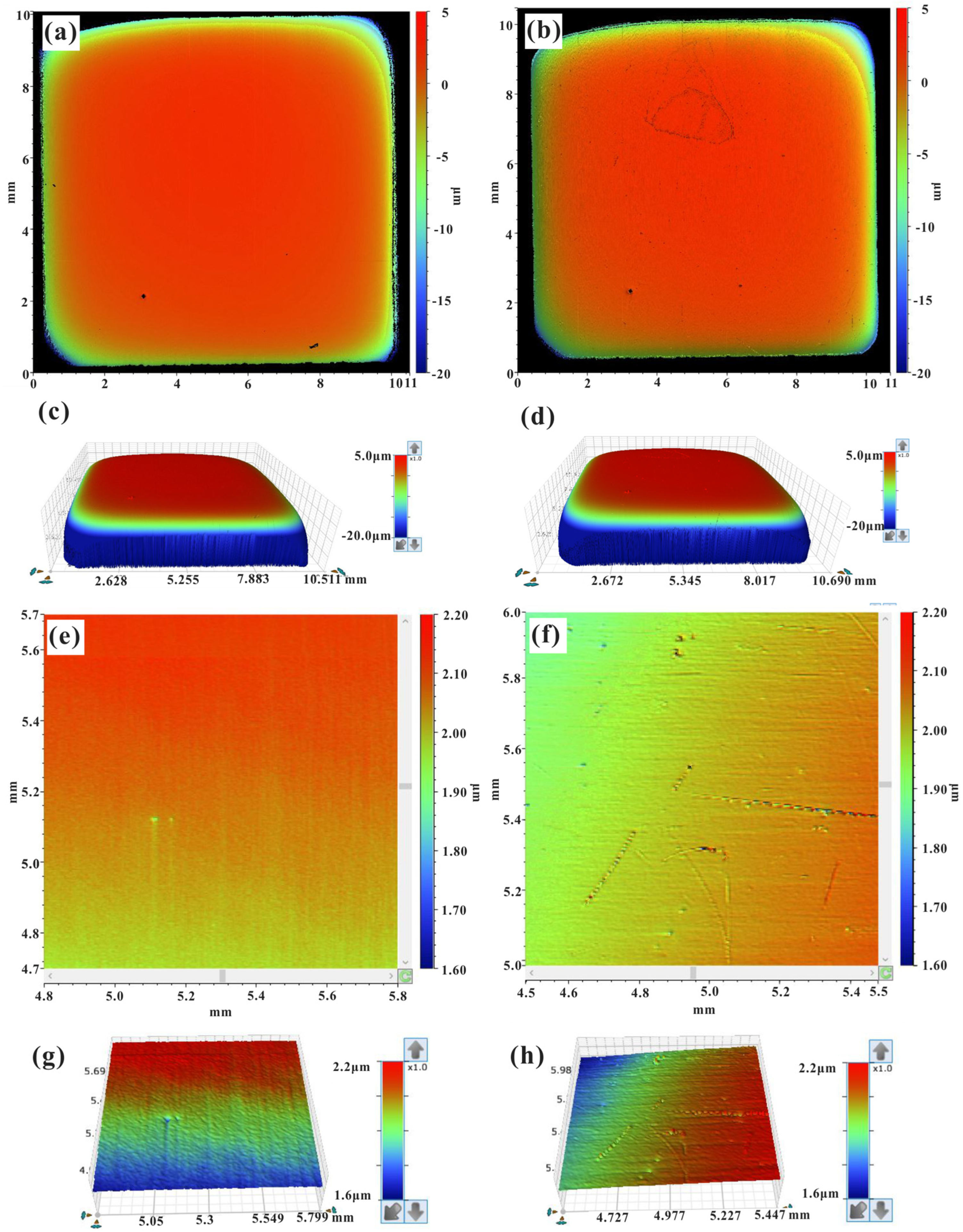
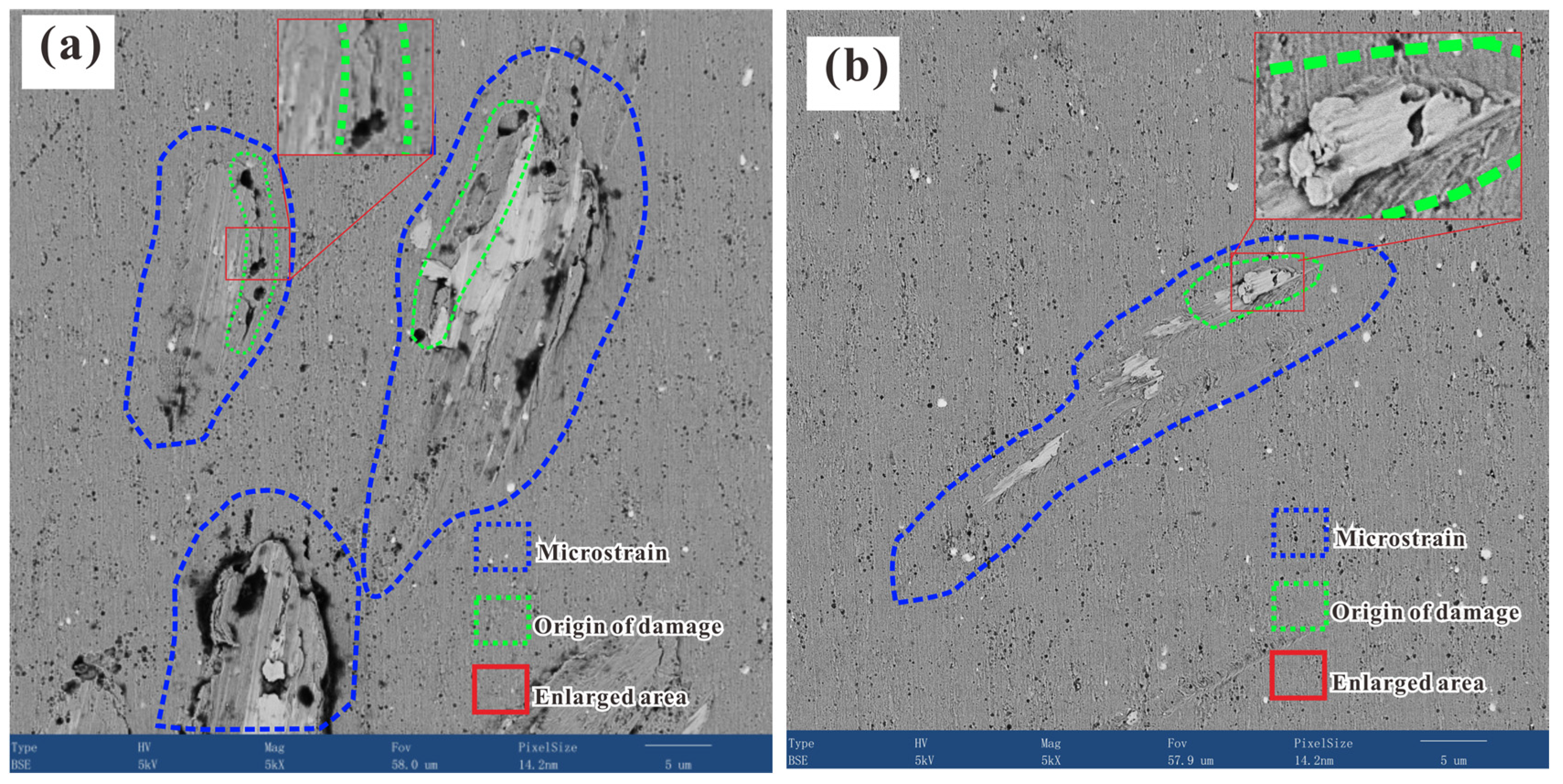

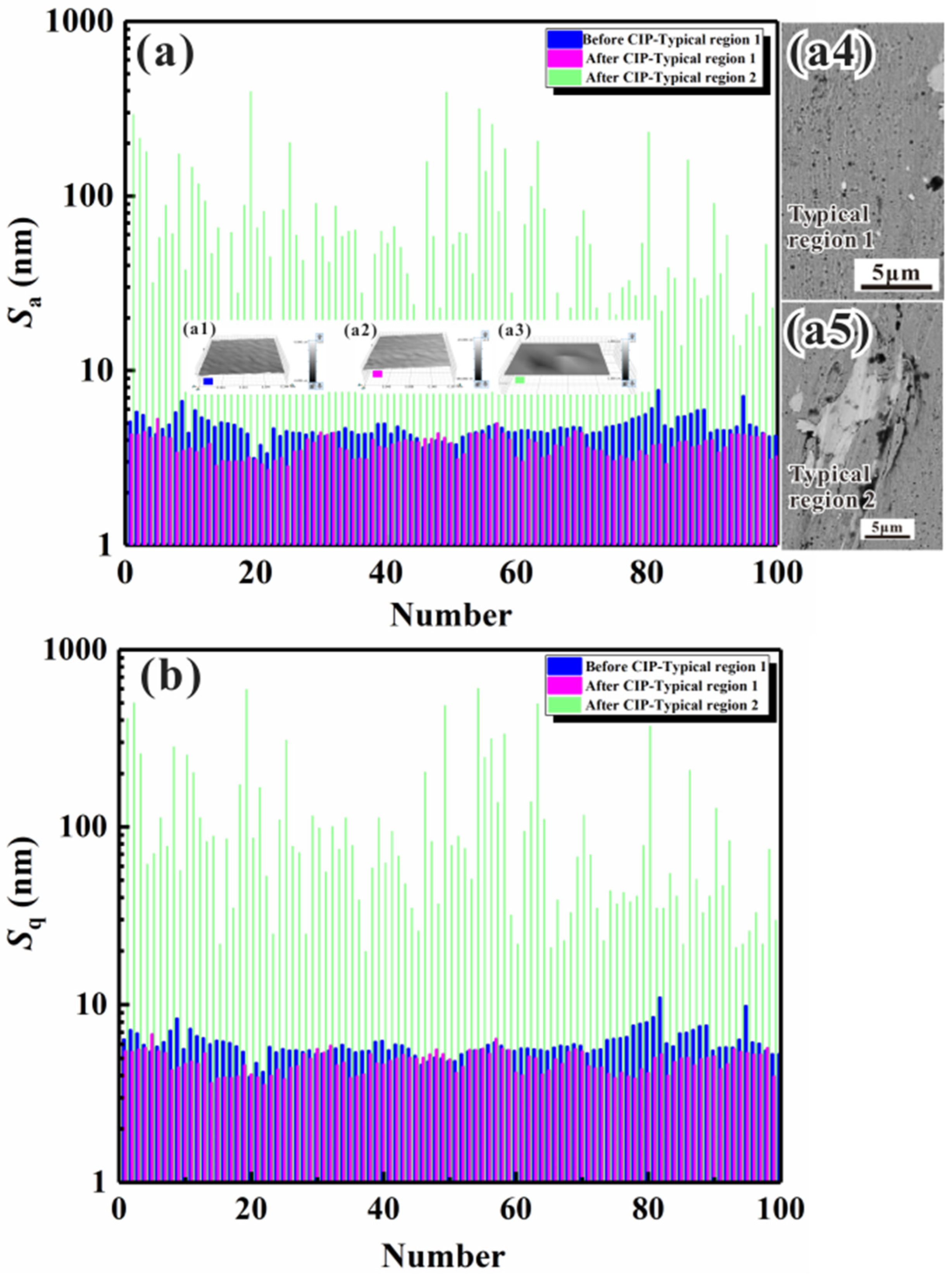
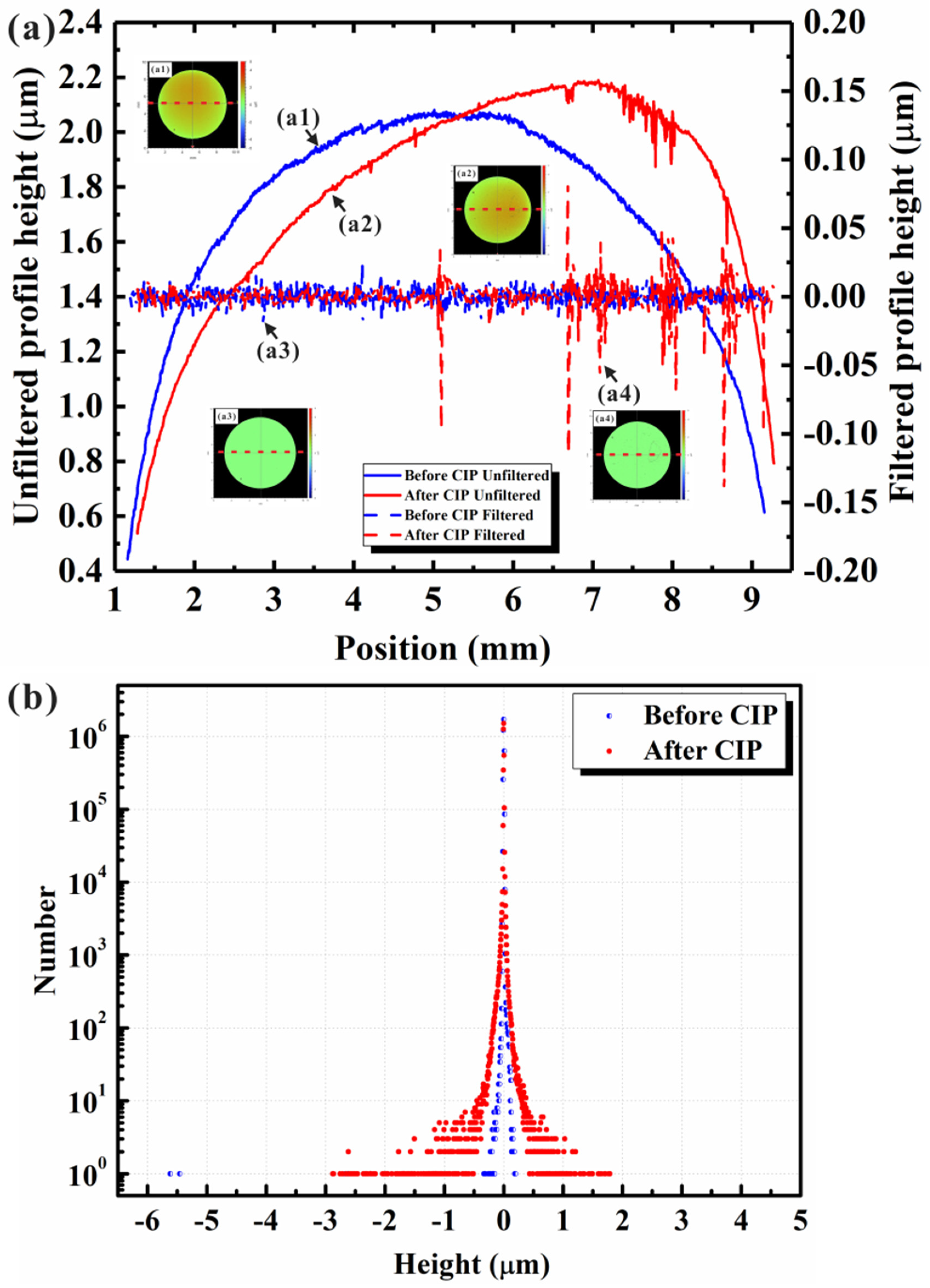
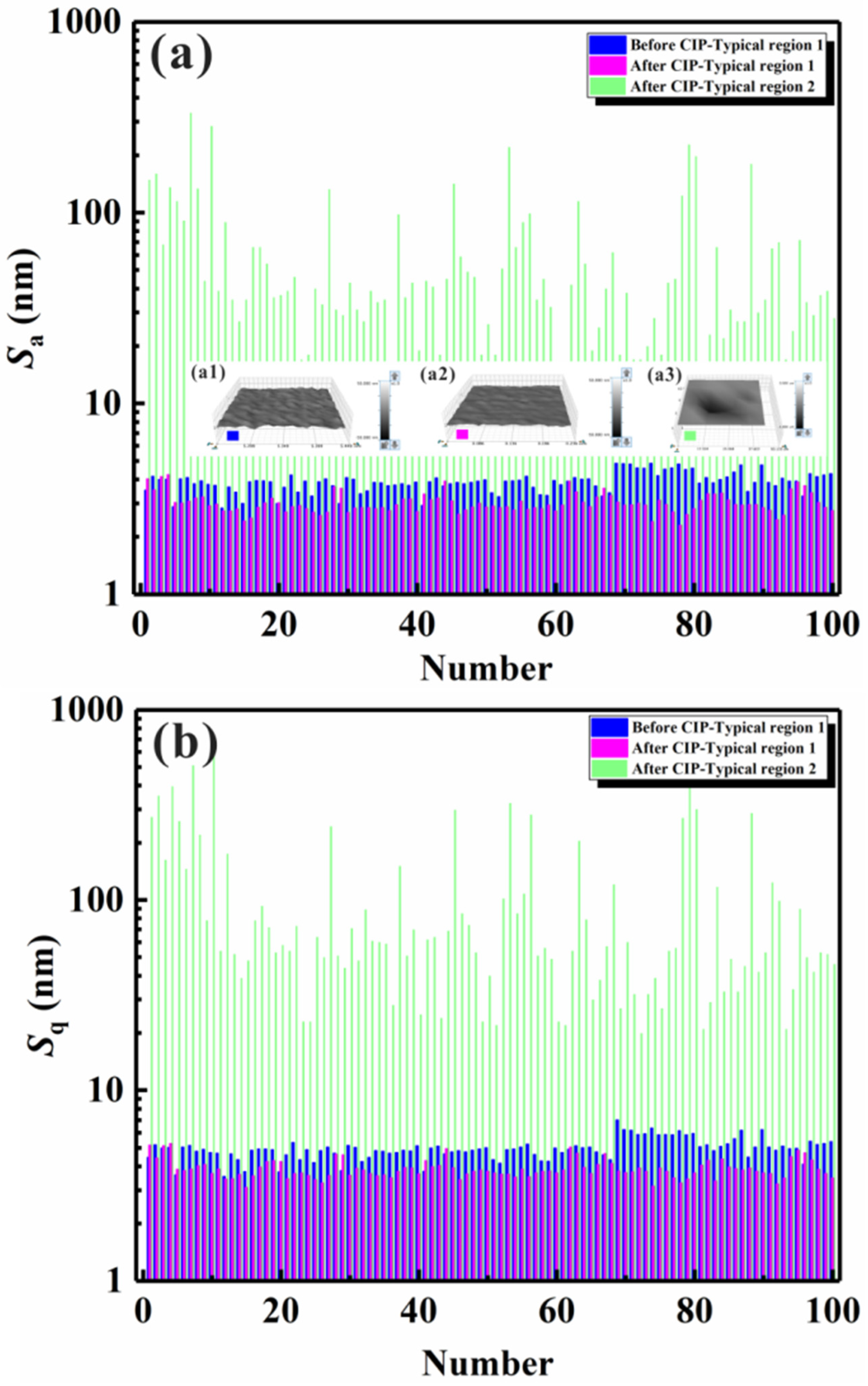
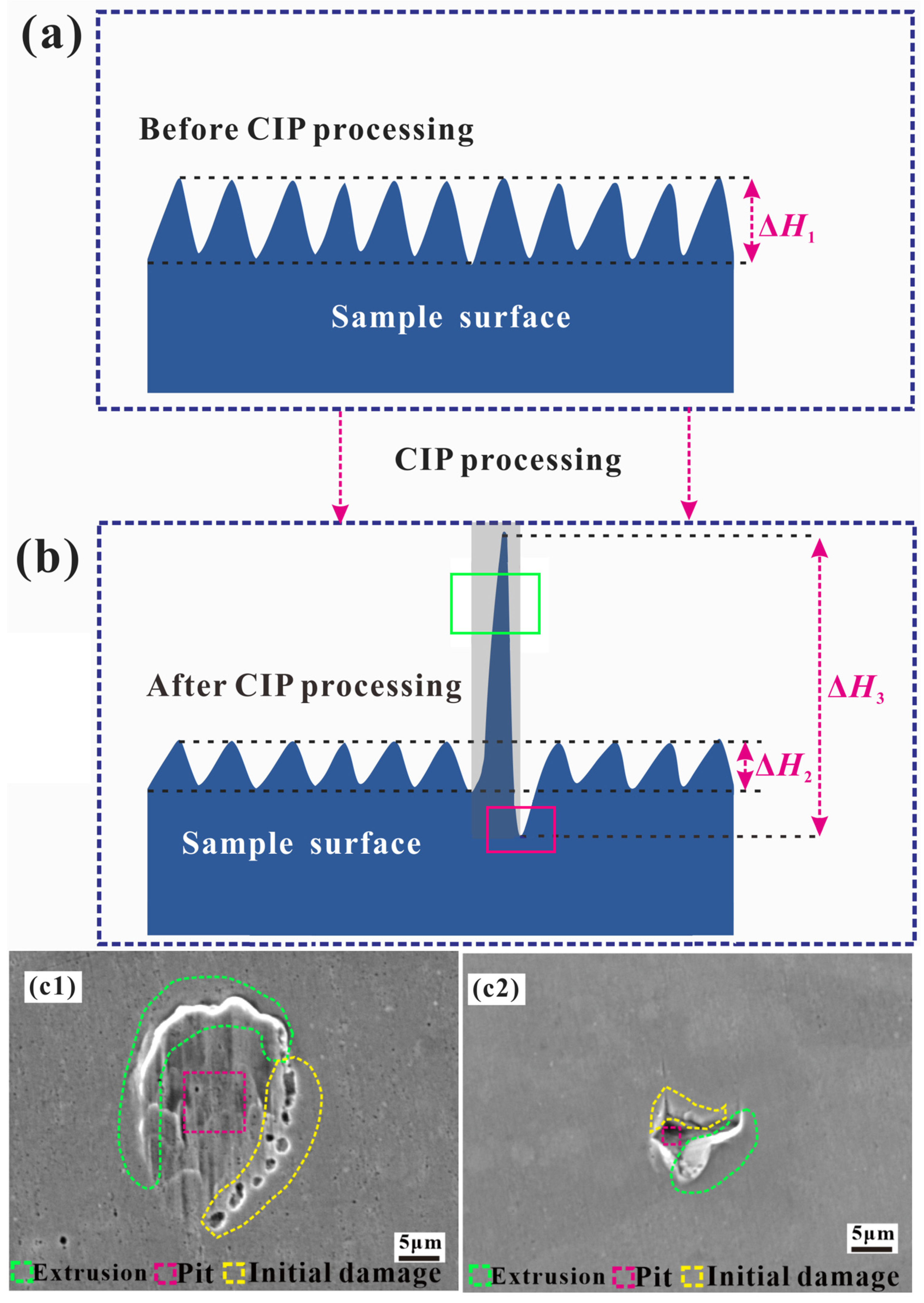
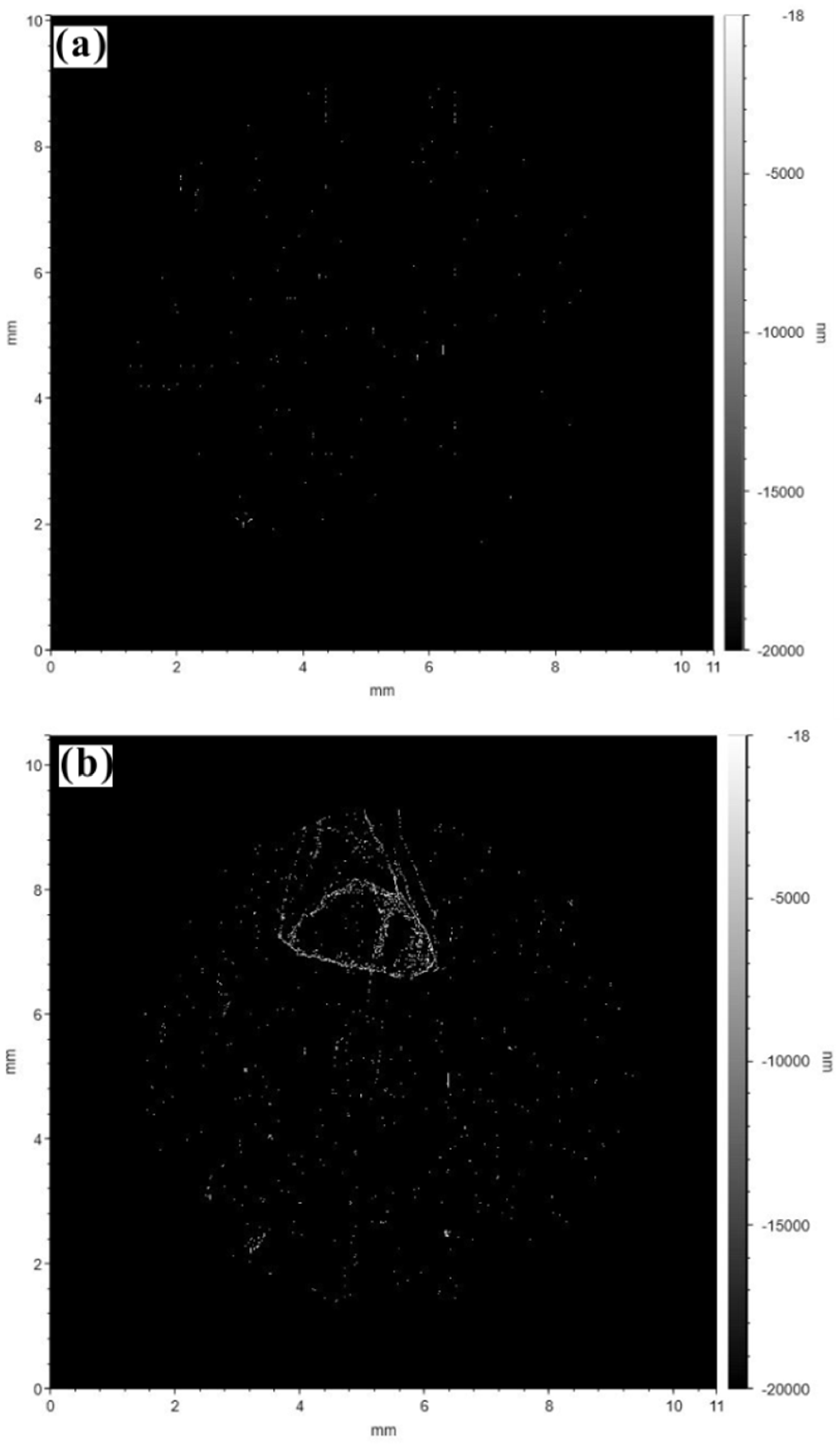
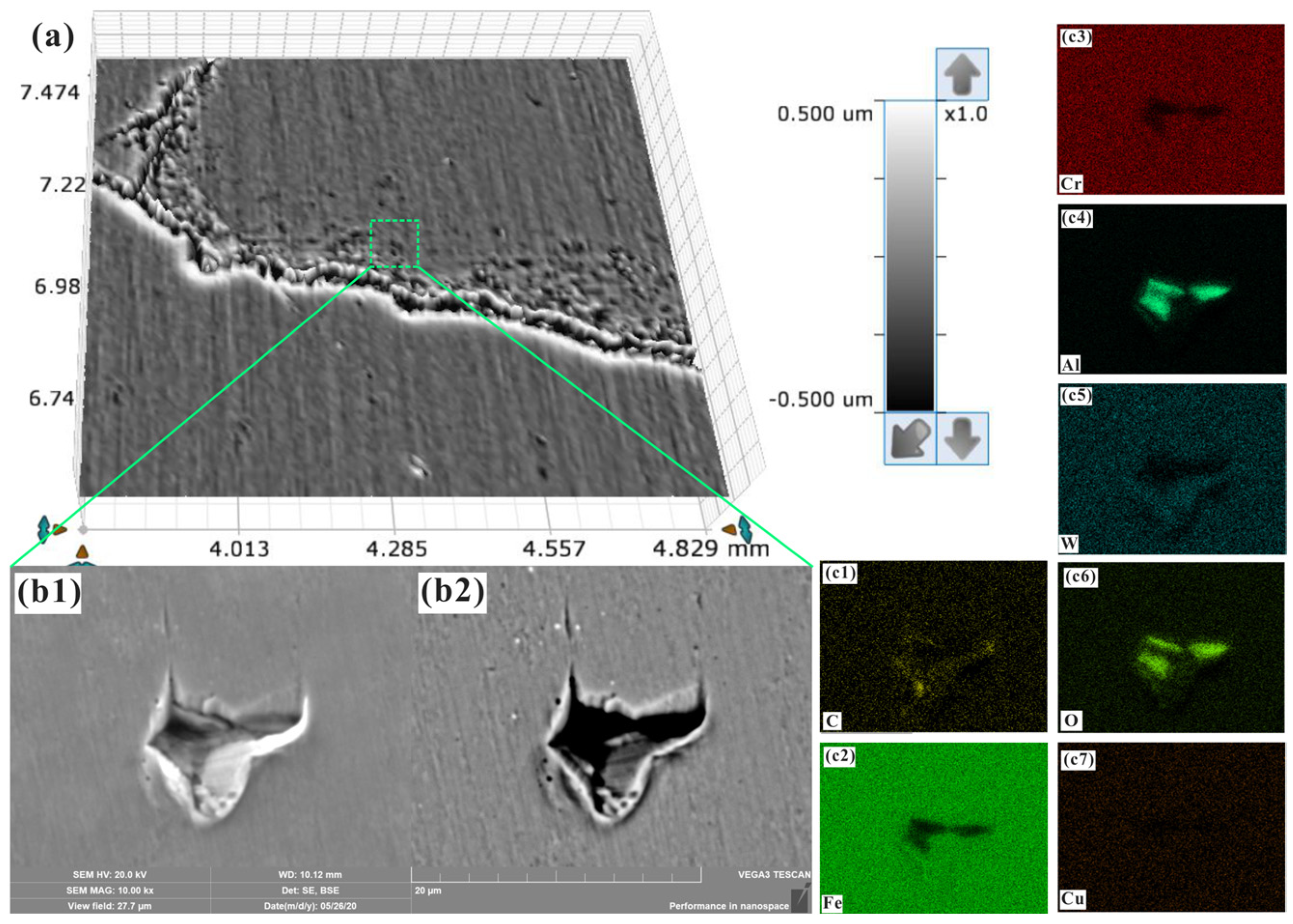
Disclaimer/Publisher’s Note: The statements, opinions and data contained in all publications are solely those of the individual author(s) and contributor(s) and not of MDPI and/or the editor(s). MDPI and/or the editor(s) disclaim responsibility for any injury to people or property resulting from any ideas, methods, instructions or products referred to in the content. |
© 2024 by the authors. Licensee MDPI, Basel, Switzerland. This article is an open access article distributed under the terms and conditions of the Creative Commons Attribution (CC BY) license (https://creativecommons.org/licenses/by/4.0/).
Share and Cite
Fang, Z.; Ren, Q.; Wang, H.; Cao, J.; Shen, X.; Zhang, W.; Wan, W.; Yin, W.; Li, L.; Zang, B. A New Strategy for the High-Throughput Characterization of Materials’ Mechanical Homogeneity Based on the Effect of Isostatic Pressing on Surface Microstrain. Materials 2024, 17, 669. https://doi.org/10.3390/ma17030669
Fang Z, Ren Q, Wang H, Cao J, Shen X, Zhang W, Wan W, Yin W, Li L, Zang B. A New Strategy for the High-Throughput Characterization of Materials’ Mechanical Homogeneity Based on the Effect of Isostatic Pressing on Surface Microstrain. Materials. 2024; 17(3):669. https://doi.org/10.3390/ma17030669
Chicago/Turabian StyleFang, Zhigang, Qun Ren, Haizhou Wang, Jingyi Cao, Xuejing Shen, Wenyu Zhang, Weihao Wan, Wenchang Yin, Liang Li, and Bolin Zang. 2024. "A New Strategy for the High-Throughput Characterization of Materials’ Mechanical Homogeneity Based on the Effect of Isostatic Pressing on Surface Microstrain" Materials 17, no. 3: 669. https://doi.org/10.3390/ma17030669
APA StyleFang, Z., Ren, Q., Wang, H., Cao, J., Shen, X., Zhang, W., Wan, W., Yin, W., Li, L., & Zang, B. (2024). A New Strategy for the High-Throughput Characterization of Materials’ Mechanical Homogeneity Based on the Effect of Isostatic Pressing on Surface Microstrain. Materials, 17(3), 669. https://doi.org/10.3390/ma17030669





